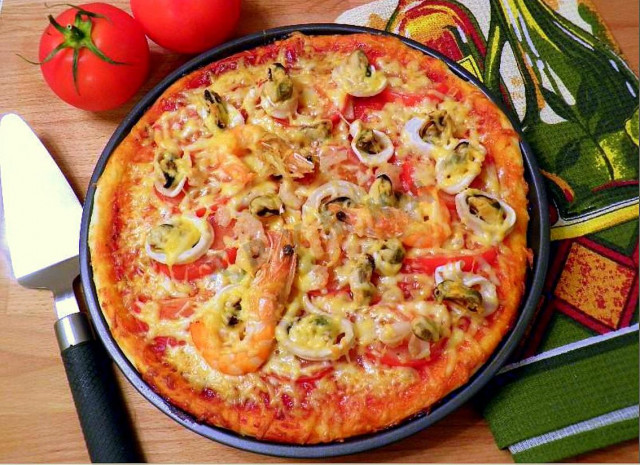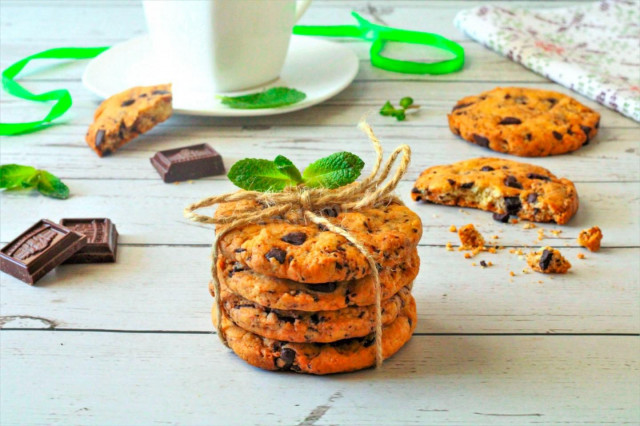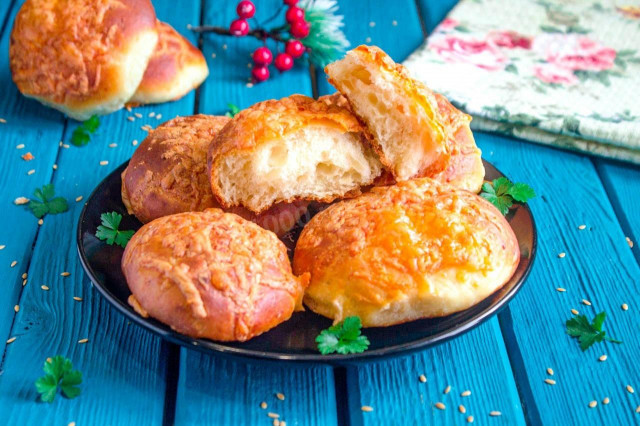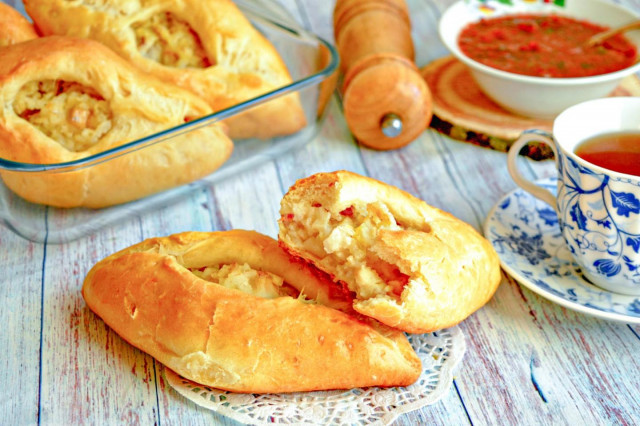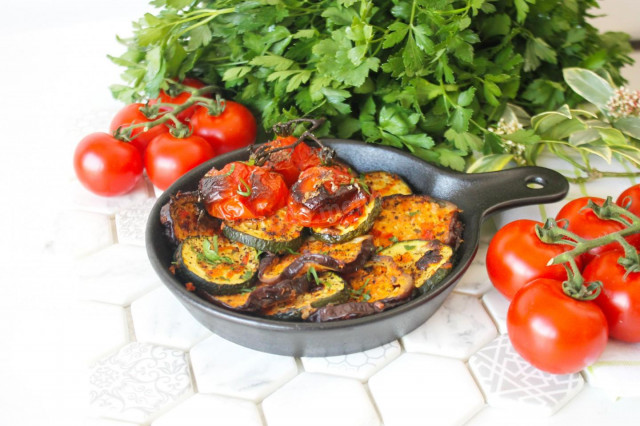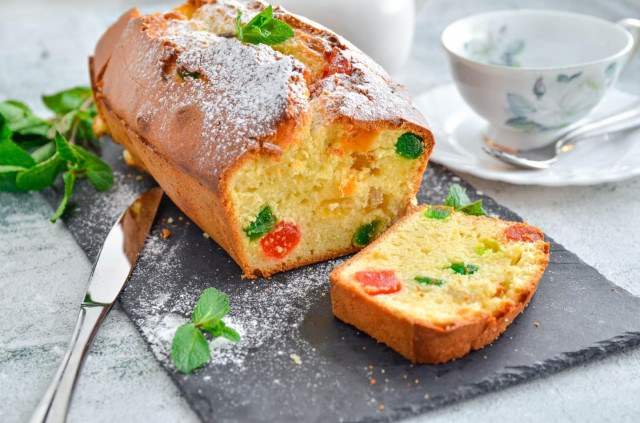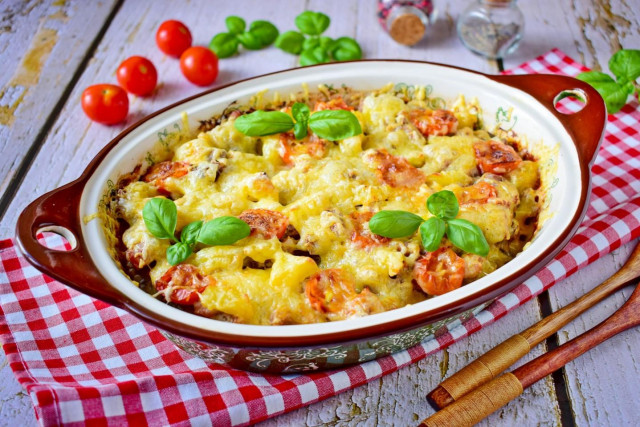Composition / ingredients
Step-by-step cooking
Step 1:
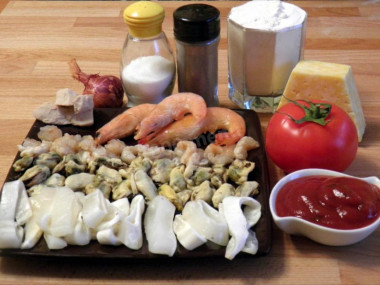
How to make seafood pizza? Prepare all ingredients. Shrimp, if necessary, immediately clean and wash. Do the same with other seafood. Sift the flour through a fine sieve. Wash and dry the vegetables.
Step 2:
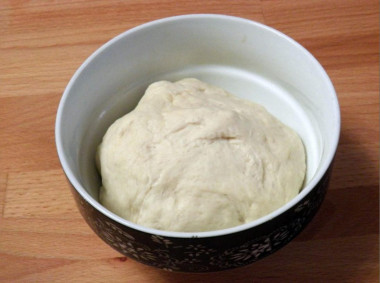
Knead the dough. To do this, pour the yeast 50 ml of water and add 2 tablespoons of flour, mix, leave for 20 minutes. Add the remaining flour and water to the approaching sourdough, add salt. Pour in the olive oil, stir everything well. Leave for 2 hours. Focus on the density of the dough, keep in mind that you may have more or less flour.
Step 3:
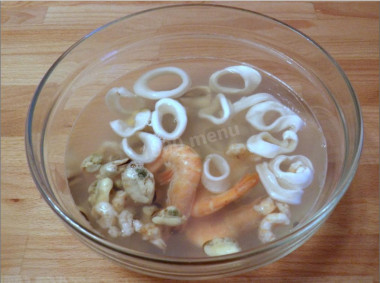
Transfer the prepared seafood to a suitable dish. Pour boiling water over the seafood and leave for 7 minutes.
Step 4:
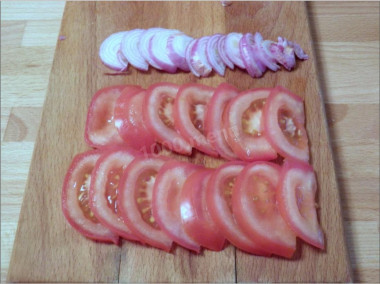
Cut the onion into half rings or rings, as desired. Cut the tomato into beautiful thin slices or circles.
Step 5:
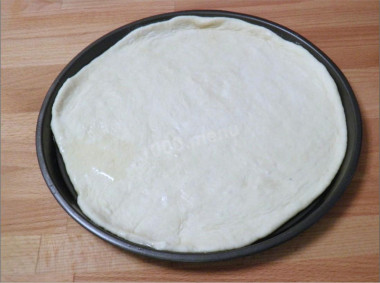
Roll out a thin round cake from the dough that has come up and transfer it to a greased form. The easiest way to do this is to take a large flat frying pan.
Step 6:
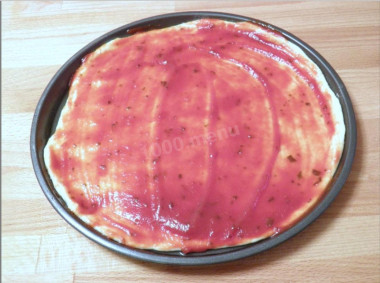
Lubricate the dough layer with tomato paste or special tomato sauce for pizza. Spread it over the entire surface of the tortilla.
Step 7:
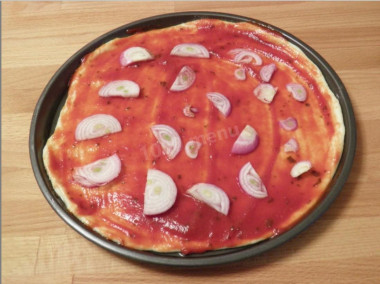
Put the chopped onion on the sauce.
Step 8:
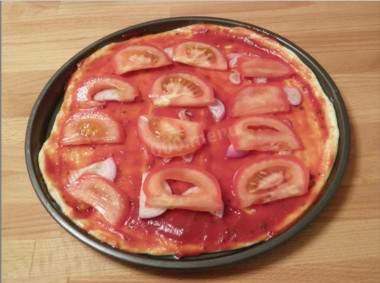
Place the tomato slices on top of the onion.
Step 9:
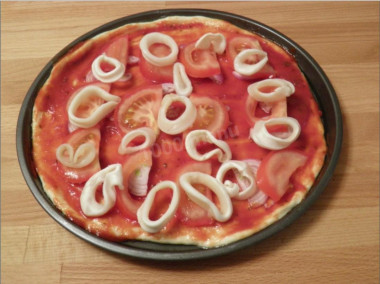
Spread the squid rings on the pizza.
Step 10:
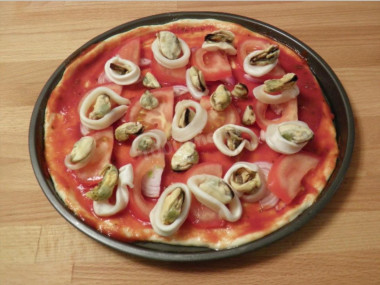
Put the peeled mussels inside the squid rings.
Step 11:
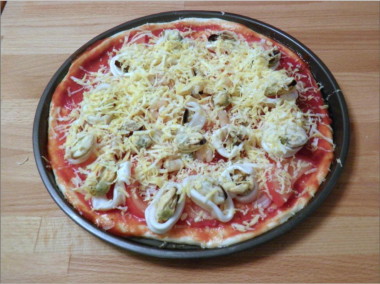
Grate the cheese on a medium grater. And sprinkle it all over the pizza surface.
Step 12:
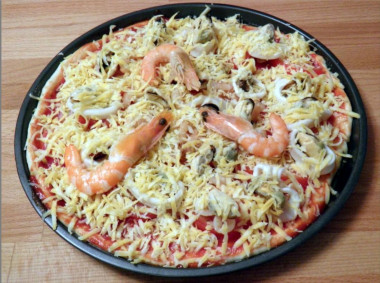
Spread the shrimp on top of the cheese.
Step 13:
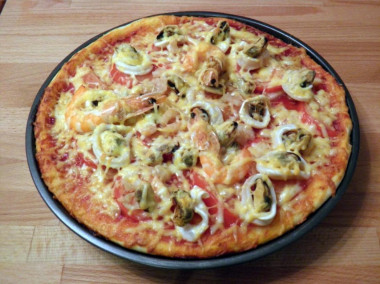
Bake the pizza in the oven for 20 minutes at 200 degrees. Focus on the features of your oven, choose the time and temperature for yourself.
Be prepared for the fact that flour may need more or less than indicated in the recipe. Focus not on the amount of flour, but on the desired consistency of the dough. To avoid mistakes, read about flour and its properties!
Keep in mind that everyone's ovens are different. The temperature and cooking time may differ from those specified in the recipe. To make any baked dish successful, use useful information about the features of ovens !
Caloric content of the products possible in the composition of the dish
- Canned shrimp - 81 kcal/100g
- Boiled shrimp - 95 kcal/100g
- Shrimps peeled frozen - 60 kcal/100g
- Fresh shrimp - 97 kcal/100g
- Onion - 41 kcal/100g
- Tomatoes - 23 kcal/100g
- Fried squid - 175 kcal/100g
- Boiled squid - 110 kcal/100g
- Squid fresh - 74 kcal/100g
- Dutch cheese - 352 kcal/100g
- Swiss cheese - 335 kcal/100g
- Russian cheese - 366 kcal/100g
- Kostroma cheese - 345 kcal/100g
- Yaroslavsky cheese - 361 kcal/100g
- Altai cheese 50% fat content - 356 kcal/100g
- Soviet cheese - 400 kcal/100g
- Cheese "steppe" - 362 kcal/100g
- Uglich cheese - 347 kcal/100g
- Poshekhonsky cheese - 350 kcal/100g
- Lambert cheese - 377 kcal/100g
- Appnzeller cheese with 50% fat content - 400 kcal/100g
- Chester cheese with 50% fat content - 363 kcal/100g
- Edamer cheese with 40% fat content - 340 kcal/100g
- Cheese with mushrooms of 50% fat content - 395 kcal/100g
- Emmental cheese with 45% fat content - 420 kcal/100g
- Gouda cheese with 45% fat content - 356 kcal/100g
- Aiadeus cheese - 364 kcal/100g
- Dom blanc cheese (semi-hard) - 360 kcal/100g
- Lo spalmino cheese - 61 kcal/100g
- Cheese "etorki" (sheep, hard) - 401 kcal/100g
- White cheese - 100 kcal/100g
- Fat yellow cheese - 260 kcal/100g
- Altai cheese - 355 kcal/100g
- Kaunas cheese - 355 kcal/100g
- Latvian cheese - 316 kcal/100g
- Limburger cheese - 327 kcal/100g
- Lithuanian cheese - 250 kcal/100g
- Lake cheese - 350 kcal/100g
- Gruyere cheese - 396 kcal/100g
- Ground black pepper - 255 kcal/100g
- Pressed yeast - 109 kcal/100g
- Whole durum wheat flour fortified - 333 kcal/100g
- Whole durum wheat flour, universal - 364 kcal/100g
- Flour krupchatka - 348 kcal/100g
- Flour - 325 kcal/100g
- Tomato paste - 28 kcal/100g
- Fried mussels - 59 kcal/100g
- Boiled mussels - 50 kcal/100g
- Salt - 0 kcal/100g
- Water - 0 kcal/100g
- Olive oil - 913 kcal/100g

